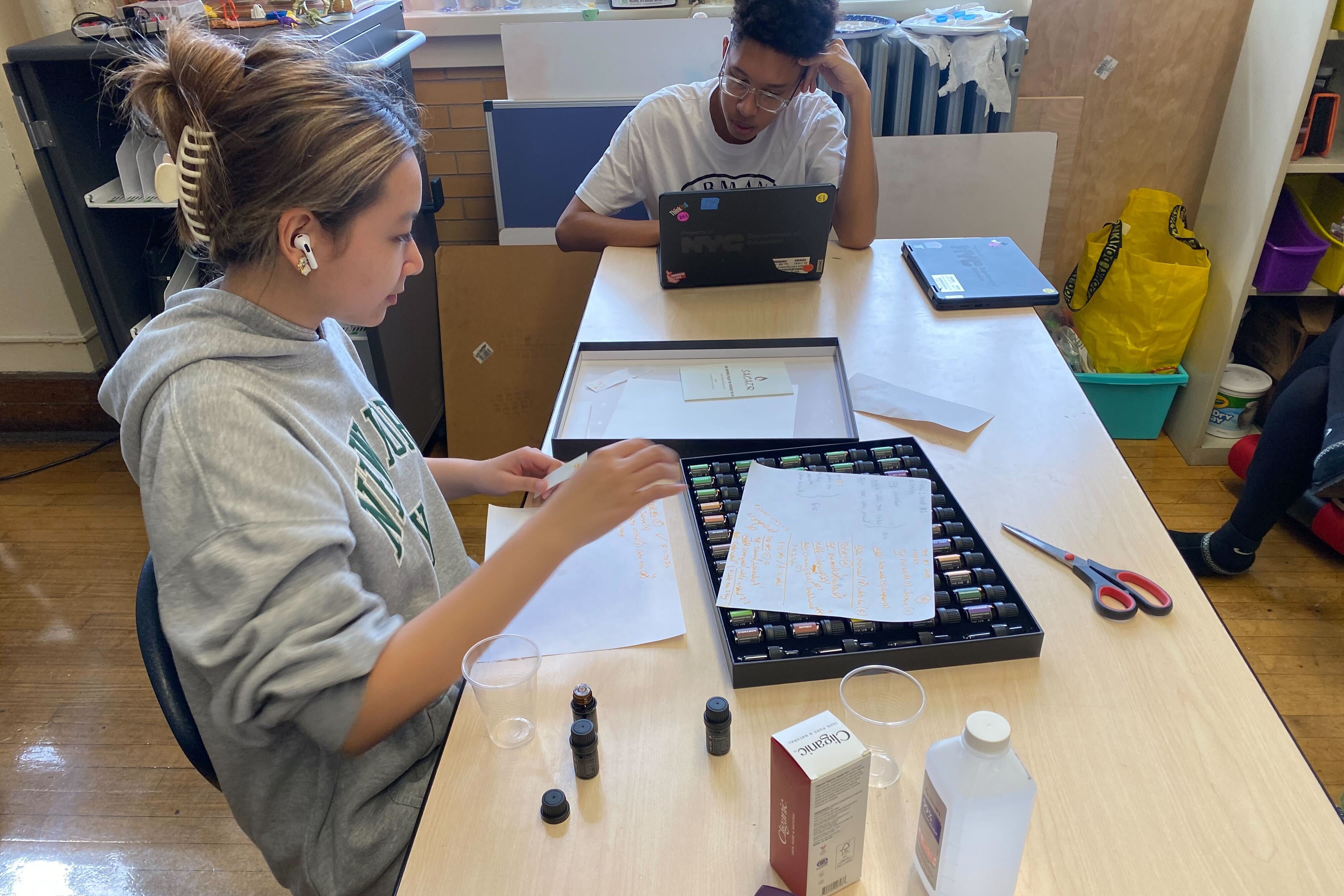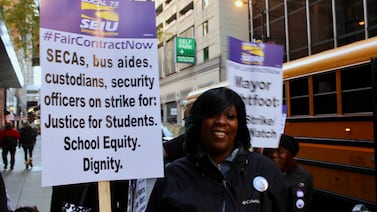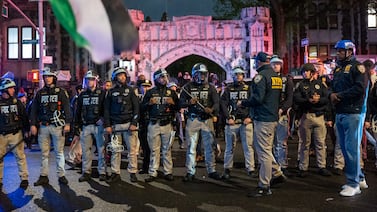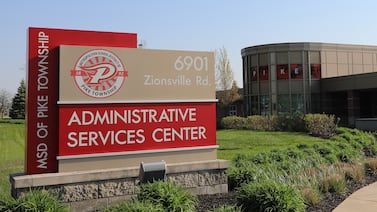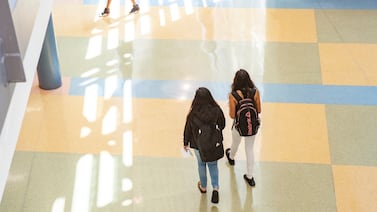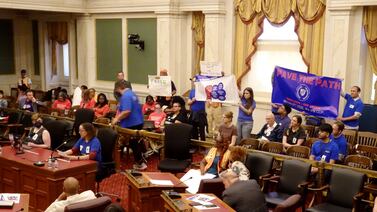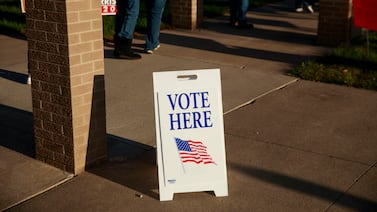Sign up for Chalkbeat New York’s free daily newsletter to keep up with NYC’s public schools.
Despite the stress of applying to New York City public schools, more children received offers to their top-choice schools across all grade levels, education department officials said Thursday.
New York City schools have long relied on the practice of sorting and screening many kids, leading to a Hunger Games-like mindset for many families. It has also resulted in one of the nation’s most segregated school systems.
This year’s offer data shows little change in terms of racial and economic diversity compared to last year.
“That’s not necessarily a bad thing,” said Nyah Berg, of the integration advocacy nonprofit New York Appleseed, who previously expressed concerns that changes to this year’s admissions cycle could lead to less diverse schools. “We have made a lot of progress over the past two years.”
As the pandemic forced many schools to drop or shift their admissions criteria, some schools have become more diverse. Though integration advocates had long been pushing for such changes, it only happened by necessity because attendance could no longer be held against students, and standardized tests were not administered as they typically were. Neither Mayor Eric Adams nor Chancellor David Banks has made integration a top priority.
“If we really want to create and foster diverse schools there’s a lot more to be done than tinkering here and there,” Berg said.
Still, she believed this year’s changes centralizing admissions for high school, in particular, made the process more transparent, and she’s hopeful the city will continue to ditch standardized test scores and attendance in screening applicants.
Here’s a snapshot of what offers looked like for different grades.
Status quo for specialized high schools
Once again, few Black and Latino students were admitted to New York City’s eight prestigious specialized high schools, which accept students based solely on a single admissions test.
Black and Latino students made up nearly 10% of offers for next year’s class, according to education department data released Thursday.
That’s about the same as the previous year and the year before that. Just seven Black students were admitted to Stuyvesant based on the admissions exam — and that number was higher than three other specialized high schools.
Black and Latino students make up about 66% of students citywide.
The small number of Black and Latino students at the city’s specialized high schools has long been the subject of fierce debate, with many blaming the disparity on the reliance of a single test for admissions. (The admissions method is governed by state law.) The Adams administration has made little indication that it plans to change the way students are admitted to these schools, largely considered the Ivy League of New York City high schools.
About 26,000 eighth graders took the Specialized High School Admissions test this year, down about 2,000 from last year, according to city data.
Little change at selective high schools
For admissions to other selective New York City high schools, little changed. The education department created a tiered system for the city’s selective schools — like Beacon, Eleanor Roosevelt, and Townsend Harris — based on seventh grade scores in core subjects. The changes were aimed to simplify the process but also raised the bar for scores needed to qualify for the top group, narrowing the group of kids with priority access to these coveted schools.
Banks stirred up controversy when discussing the shift: “If a young person is working their tail off every single day and they get a 99% average … that should be honored,” he said at the time. “You should not be thrown in a lottery with just everybody.”
There were some concerns that the changes would reverse some of the pandemic-era diversity gains seen when competitive schools could no longer rely as heavily on grades and other screening measures, like state tests scores and attendance. But more than 40 of these schools have programs that set aside a certain percentage of their seats for students from low-income families or in temporary housing, for instance. That meant if there were not enough students with top grades for “group 1” who met the eligibility requirements for a school’s diversity targets, such as a certain percentage of students from low-income families, then those seats went to applicants in the next tier.
Despite these shifts in selection criteria, the offers reveal that little changed in racial and economic demographics compared to last year when an 85 grade point average was the cutoff for the top tier instead of this year’s 90 GPA. Roughly 32% of offers at these schools went to Latino students, followed by 25% to Asian American students, 19% to Black students, and 17% to white students. Roughly 66% of the offers went to students from low-income families.
Overall, of the roughly 73,000 eighth graders across the city receiving offers this year, about 48% percent got into their top choice. That isn’t far from last year, when about 50% got their first choice or the previous year when 46% got their No. 1 pick.
About 75% applicants got into one of their top three choices, up two percentage points from last year.
The city extended offers three months earlier than last year. The goal, city officials said, was to let families know before private school deposit deadlines.
Number of screened programs drops dramatically at middle school
Following two years without selective admissions for New York City middle schools — as the pandemic upended state test scores and other screening criteria — Banks let each district’s superintendent decide whether to reinstate competitive middle school admissions.
Some families lobbied to bring back screens, while others pushed to ditch them, saying it was unfair to sort the city’s 10-year olds based on their academic performance from fourth grade.
After superintendents spent about a month deliberating with their communities, nearly all opted for fewer or the same number of screened middle schools as before the pandemic. Nearly 60 of 478 middle schools ended up reinstating screens for at least some segment of their incoming sixth graders based on their fourth grade marks; 24 of these programs used selective criteria for all incoming sixth graders.
That dramatically reduced the number of kids in screened middle school programs from about 16,510 getting such offers in 2020 to about 5,100 with offers for the coming school year, according to the data.
The breakdown of students by income in screened programs remained fairly steady, with about 60% coming from low-income families. The share of Asian American students jumped to 35%, up from 21% in 2020, likely based on the demographics of which districts opted for screened programs.
Overall, 74% of the city’s fifth graders received an offer for their top choice, and 92% got one of their top three choices.
Kindergarten offers slightly up
City data also reflected a slight increase in kindergarten applicants, with about 1,200 more children applying. Those figures included applications for spots in the city’s coveted “gifted and talented” program, which used teacher evaluations instead of the prepandemic exams to select preschoolers.
About 95% of families saw their children admitted to one of their top three choices this year — up 4% from last year — as more seats were available and as the city said it extended more offers to families interested in schools outside of their zone or district.
This year, applications to the gifted and talented program were included with general kindergarten admission. Officials did not release admissions data for the gifted and talented program Thursday.
In the past, the program has faced criticism for admitting small numbers of Black and Hispanic students.
The application process underwent multiple changes during the pandemic, with Adams and Banks reversing a plan to phase out the program and choosing instead to expand the track by 100 seats in kindergarten last year.
Applications up slightly for 3-K and pre-K
For the city’s youngest students, admissions data showed a slight uptick as the city saw more applicants and more children set to receive 3-K and pre-K offers.
Admissions to 3-K programs rose by 8% this year, as the number of applicants rose to roughly 41,600. That was up from just under 40,000 in 2022.
For families applying, 68% were admitted to their first-choice program, up 5% from 2022.
Nearly 61,000 children received offers to pre-K programs this year — a jump of 3% from the year prior. That came as applications were up more than 3,000 from 2022, though still well below pre-pandemic figures.
Among applicants, 84% were admitted to their first-choice program.
The numbers come as a consulting firm’s report found the city’s early childhood system — including 3K, pre-K, as well as infants and toddlers — currently had roughly 30,000 empty seats — many of which were not in areas where demand is high, according to officials. That meant some parts of the city would see waitlists for spots, while others had thousands of empty seats, officials said.
The city did not release the complete findings of the report Thursday, which it paid the firm Accenture more than $760,000 to conduct. But its prognosis echoes a common criticism from the Adams administration — that the supply and demand of seats have been misaligned in areas across the city.
Officials said that the findings pointed toward a need to look at enrollment projections and available seats within zip codes, redistributing seats to areas with higher demand.
Of the approximately 140,000 seats across the city’s early childhood system, between roughly 119,000 and 127,000 were projected to be filled in 2024-25, according to the report.
“The city is focused on matching seats to parent demand—and that’s not a bad thing—but they should also be working to increase parent demand, particularly among underserved communities where children currently have the least access to quality early education programs,” said Halley Potter, a senior fellow at The Century Foundation. “The Adams administration has not provided the needed investments in outreach, and that, combined with the lagging effects of the pandemic disruption to early childhood settings, is a recipe for inequity.”
The city’s free prekindergarten program has struggled this year, as delayed payments have caused some providers to shutter. Some officials and advocates, including City Council Speaker Adrienne Adams, have criticized the administration for its handling of the early education system.
Julian Shen-Berro is a reporter covering New York City. Contact him at jshen-berro@chalkbeat.org.
Amy Zimmer is the bureau chief for Chalkbeat New York. Contact Amy at azimmer@chalkbeat.org.


